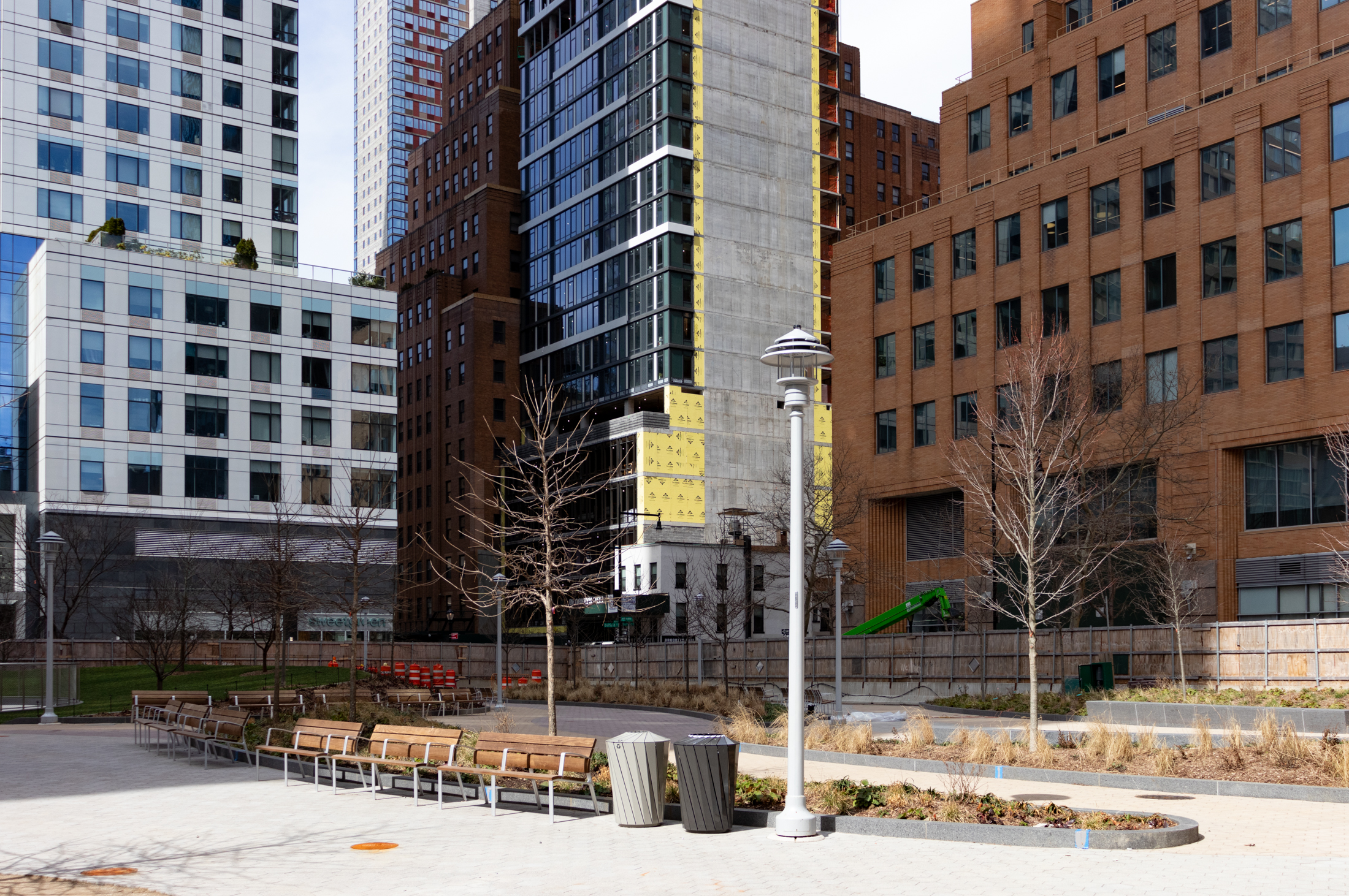Building of the Day: 376 Fulton Street
Brooklyn, one building at a time. Name: Commercial loft building Address: 376 Fulton Street Cross Streets: Smith and Red Hook Lane Neighborhood: Downtown Brooklyn Year Built: 1873 Architectural Style: Second Empire Architect: Unknown Landmarked: No, but should be The story: This tall commercial lofts building is one of the very few remaining cast iron fronted…

Brooklyn, one building at a time.
Name: Commercial loft building
Address: 376 Fulton Street
Cross Streets: Smith and Red Hook Lane
Neighborhood: Downtown Brooklyn
Year Built: 1873
Architectural Style: Second Empire
Architect: Unknown
Landmarked: No, but should be
The story: This tall commercial lofts building is one of the very few remaining cast iron fronted buildings in Brooklyn. As in Soho and downtown Manhattan, cast iron buildings were a standard for commercial buildings in New York and Brooklyn in the 1870s, when the material was at the height of its popularity. They were really just brick buildings with sheet metal elements cast into classical columns, carved decorative trim, busts and other ornamental detail, applied to the brick understructure.
It was great stuff, enabling developers to have very attractive storefronts without paying for all of that carving in stone. The cast iron could be painted to resemble marble, limestone, brownstone or granite. The iron made the buildings more fire-resistant, and the structure enabled builders to construct more windows in the front facades. All of it made for beautiful and impressive commercial buildings, as anyone who frequents Soho knows. We had them here in Brooklyn too, but not nearly as many, and unfortunately, very few have survived.
This building has been home to many different companies over the years, companies whose businesses were all across the spectrum, in terms of categories. It was first home to Balch-Price, a furrier who made men’s hats and gloves and sold menswear and accessories. Balch-Price moved here in 1873 from Fulton and High Streets. The company grew rapidly, eventually expanding into men and women’s fur coats and later, ladies’ hats and accessories. They needed more room, and annexed the Baldwin Building, next door on the corner, and in 1912, tore it down, and built the building that houses Lane Bryant today. That story was a BOTD found here.
While Balch-Price was here, they did not take up the entire five stories. Going by the newspapers, there were others renting space in here, including a dressmaker, at least one lawyer, a mortgage company, even a private investigator. After the furriers moved next door in 1915, the storefront space was rented to others. Over the years, a series of stores and companies whose names are lost to everyone except those who remember them from their childhood, and those who love and collect history.
In 1923, the ground floor was a restaurant called the “Pall Mall.” They served good German cooking, and were popular for Sunday dinners and special occasions. In 1928, the building was closed for a time while the subway tunnels were dug underneath it, but it re-opened much faster than it would have today. In 1930, a furniture store called Bloomingdale’s sold their wares, advertising often in the Eagle. In 1936, the Hilton Company, men’s haberdashery sold the latest clothing from this site.
The most famous tenant of this building in modern memory was Crazy Eddie’s. If you are of a certain age, you will remember this location as the Downtown home of this electronics giant. Crazy Eddie sold lots of stereos, televisions, boom boxes and telephones here, taking up all five floors. I bought stuff here. The owners, Eddie Antar and his brother were never seen, but his commercials featured DJ Jerry Carroll, who gesticulated like a madman, pronouncing the stores prices as “insane.”
This branch of the store was but one of 43 stores in the Tri-State area. Unfortunately things didn’t turn out well for the Antars. They were engaging in all kinds of corporate fraud, and the entire empire collapsed. Eddie Antar fled to Israel, but finally came back and did some jail time. The store was empty for many years, including when this photo was taken in 2006. Today, it is once more in use, going to show that no matter what goes on inside, a good building is worth saving. This is one of Fulton Street’s gems, although it is a shame no one with any taste modernized the ground floor. GMAP
(Photo: Scott Bintner for Property Shark)













What's Your Take? Leave a Comment